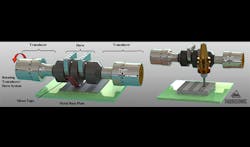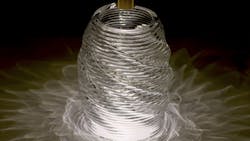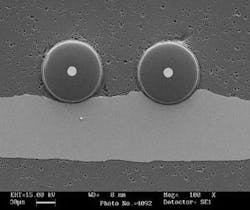Mass Production for 3D Printing
3D printing is finding its way into more industries and applications. However, some have not jumped on the bandwagon. It is easy to be skeptical when time is money, and 3D printing is not known for its speed. 3D printing advocates are finding ways to remedy this. One way is with labor cost. Fully assembled pieces can be made, and in some printers in multiple materials.
In a single print, Airbus is able to make a part of an aircraft’s fuel system that used to take 10 pieces and a technician to produce. This part of the fuel system alone reduces the cost of manufacturing it by 30%. Airbus is adopting 3D printing so heavily that by 2018, it plans on producing 30 tons of 3D printed metal parts every month. Airbus says it could reduce the weight of each aircraft by more than a ton.
Virgin Atlantic estimates the reduction of just one pound in weight from all the planes in their fleet would save 14,000 gallons of fuel per year. This average means a 52-fleet airline (about the size of Virgin Atlantic’s fleet) could save over 500,000 gallons of fuel per year.
Additive manufacturing (AM) processes are starting to gain speed under the label of 3D printing. Fused filament fabrication may have the media’s attentions, but a novel technique I found in my research was Fabrisonic. The company uses an ultrasonic welding technique. One process involves unspooling foil over an ultrasonic horn that is mounted on a three-axis machine. At 0.006-0.01 in. thicknesses, the foil is capable of maintaining predictable materials properties while being engineered into customized products with embedded sensors or complex interiors. This technology has been used in many applications involving aerospace, oil and gas, and military. Traditional metal foil can be ultrasonically welded layer-by-layer. With this process each layer—or part of a payer—could be a different metal foil to create a complex part with unique properties. This could play an interesting role in radio frequency (RF) components where many small metal components are tediously built by hand.
This lamination process for additive manufacturing is also being used by Impossible Objects LLC. The company can laminate layers of materials, such as carbon fiber; then an inkjet printer lays down a layer of polymer in the geometry of the part. This layering repeats as the inkjet prints the cross-section of the part between layers of carbon fiber. Each layer will also be pressed and heated to ensure part density and to melt the polymer, bonding the layers. This presents good strength perpendicular to the layers, but when the forces are parallel to the layers a part will only be as strong as the polymer that holds it together. This generates parts faster and that are stronger than some polymer AM processes. It can be difficult to align the right material with a design, but current technology and evolving processes are offering an expanding tool box that is reducing limitations.
Hybrid Manufacturing Technologies and other companies are using printing oversized parts sometimes as little as 1% larger—then, using a CNC, hone in on desired resolution and tolerances. By using both technologies, manufacturers are able to make parts faster and obtain higher tolerances than could be achieved by the printer alone. CNCs can offer 0.0001-in. tolerances where, depending on the printer and process, a 3D printer can achieve 0.001-0.008 in.
The process known as digital light projection (DLP) received more attention after Carbon 3D showed its ability to increase print speeds dramatically by introducing a material that can introduce air into the process. Joseph DeSimone presented a Ted talk where he showed how much faster 3D printing can be and that we have just scratched the surface of this innovation. DLP projects cross-sections through a window on the bottom of a vat process. The part is being built layer by layer fully submerged so no air is able to aid in the solidification process. Carbon 3D is, in short, a material that is transparent and allows air to permeate through to the photosensitive polymer increasing print speed 10 times faster, and they believe much faster speeds are possible. This is one of the reasons Ford partnered with Carbon 3D.
Despite the trends and buzz words surrounding 3D printing, its growth, and some of the interesting techniques, it has found a permanent place in the manufacturing world. Two questions I have been asked are: Will 3D printing cross the chasm, and will 3D printing ever be able to compete in a mass-production market? My answer to both is that some companies are already there or soon will be.



